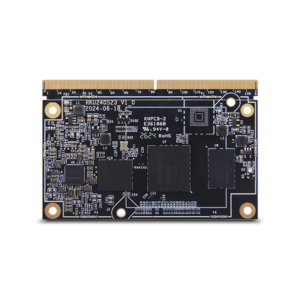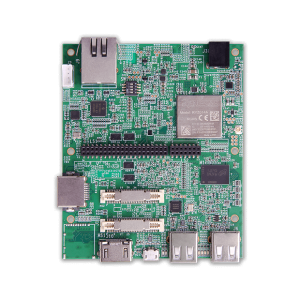The Advantages of Computer-on-Modules for Scalable, High-Performance Applications
The Advantages of Computer-on-Modules for Scalable, High-Performance Applications
Blog Article
The Advantages of Computer-on-Modules for Scalable, High-Performance Applications
In the current fast-paced technological landscape, corporations and developers are increasingly turning to modular options to meet up the ever-growing needs of high-performance applications. One option gaining grip is the usage of computer on module. These compact, self-contained techniques are stuffed with all the necessary components of a computer, including the model, storage, storage, and connection interfaces, all integrated into a single unit. In this short article, we investigate why Computer-on-Modules are learning to be a go-to choice for scalable, high-performance applications across various industries.

1. Small Style and Integration
One of many major benefits of COMs is their compact form factor. These modules are created to integrate all critical aspects of a pc, reducing the necessity for multiple discrete parts and which makes it simpler to generate lightweight, space-efficient systems. That integration permits designers to construct powerful answers without compromising the general size of the end item, which is very beneficial in industries such as for example embedded techniques, IoT devices, and professional automation.
2. Scalability for Varied Purposes
Scalability is an essential factor for contemporary applications, particularly in areas like telecommunications, automotive, and edge computing. With Computer-on-Modules, companies can simply range up or down with regards to the unique performance and resource demands of these projects. As an example, an organization building a benefit computing solution may start with an element that meets standard needs and then update to stronger modules while the workload or running requirements grow. That versatility allows corporations to future-proof their investments and arrange hardware with developing efficiency demands.
3. High-Performance Computing
Several high-performance programs require a powerful computational backbone to handle demanding jobs such as for instance real-time information control, movie analytics, or equipment learning. COMs are generally made with effective processors, high-speed interfaces, and sufficient storage, creating them capable of offering the high throughput and low-latency efficiency required for these applications. Furthermore, their power to support the most recent model architectures assures that techniques can stay at the lead of performance benchmarks.
4. Price Performance and Time Savings
Still another substantial advantageous asset of using Computer-on-Modules is charge efficiency. Because the modules come pre-integrated with crucial components, designers save equally time and sources that would otherwise be used on planning, screening, and assembling specific components. This could result in decreased progress rounds and a faster time-to-market for services and products, which is critical in competitive industries. Also, considering that the hardware components are standardized, the danger of incompatibility is decreased, ultimately causing easier progress processes and lower design costs.
5. Variable Modification
While COMs give you a large amount of integration, they are also designed for flexibility. Many COMs include numerous choices for I/O interfaces, storage designs, and energy management options, enabling developers to tailor the component to the specific wants of the application. This usefulness is specially useful in industries wherever customization is important, such as for instance medical devices, robotics, and automotive applications.

Realization
To sum up, Computer-on-Modules provide numerous advantages for corporations and developers seeking to generate scalable, high-performance solutions. Their lightweight design, scalability, strong processing abilities, cost-efficiency, and modification possibilities cause them to become a great choice for a wide selection of applications. As industries continue steadily to evolve and need more powerful, flexible solutions, COMs can certainly perform a pivotal position in surrounding the future of technology. Report this page